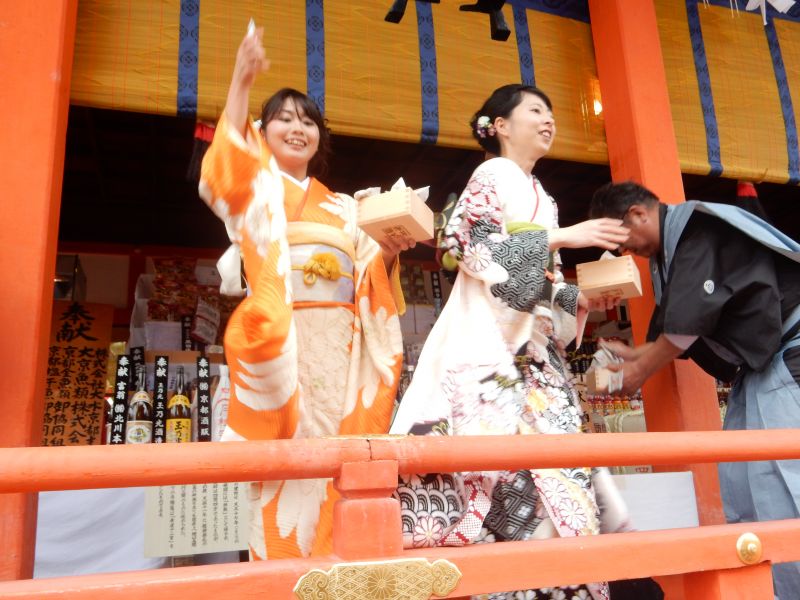
Young women throwing beans during the mamemaki at Inari
Kyoto is blessed with Setsubun events, and so far I’ve done the rounds at Yasaka, Yoshida, Shogo-in, Heian Jingu, Rozan-ji, and Mibu-dera. This year I thought I’d try Fushimi Inari (next year it will be Matsuo Taisha).
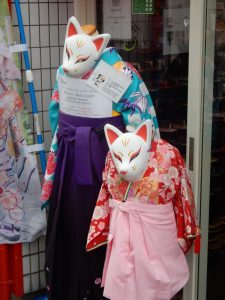
Cosplay rental shops doing a good business these days
Unlike other places, Fushimi Inari does not go in for a performance of oni demons or spectacular fire ceremonies. Instead it has two sessions of mamemaki (bean throwing) at 11.00 and 13.00. As explained in a previous post, the beans symbolise the life force, and have the power to drive away demonic forces.
The bean throwing is done by a team of parish members and young women in kimono born in the zodiac year 24 years ago. They all line up around the kagura stage and throw out packets of beans. It’s all over in about five minutes, and everyone goes home happy as there are plenty of beans for everyone. (Catch them and you’ll have luck through the coming year.)
The most interesting item as far as I was concerned was a lucky charm called shirushi no sugi. This consists of red and white shide (paper strips) on a wooden stick with a picture of Otafuku and a cedar sprig attached. Otafuku makes sense, since the plump cheeked woman is a symbol of fertility like the beans, and therefore an enemy of anything injurious to life, like evil demons. (For a previous piece on Otafuku, click here.) But what of the cedar? I asked one of the priests, and this is the interesting answer I got.
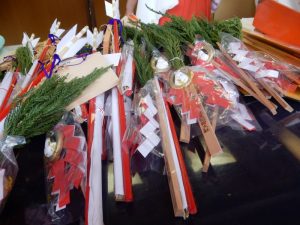
shirushi no sugi on sale at the shrine
In Heian times, when the Kumano pilgrimage was popular, people starting out from Kyoto would stop off at Fushimi Inari to take a sprig of cedar from the hill, because it was considered sacred (the whole hill was imbued with kami). They attached this to their robe as a sign they were on pilgrimage and showed it to the priests in Kumano to be blessed. On their return to Kyoto, they headed again for Fushimi Inari and planted the sprig on the hill. If it took root and started to grow into a new tree, then their wishes would come true.
It’s a pleasant custom in lots of ways, for it asserts the divinity of nature and suggests an environmental element to Inari spirituality. Good to see it still surviving1000 years later, if only as a token charm. Good for Inari, and good for Otafuku!
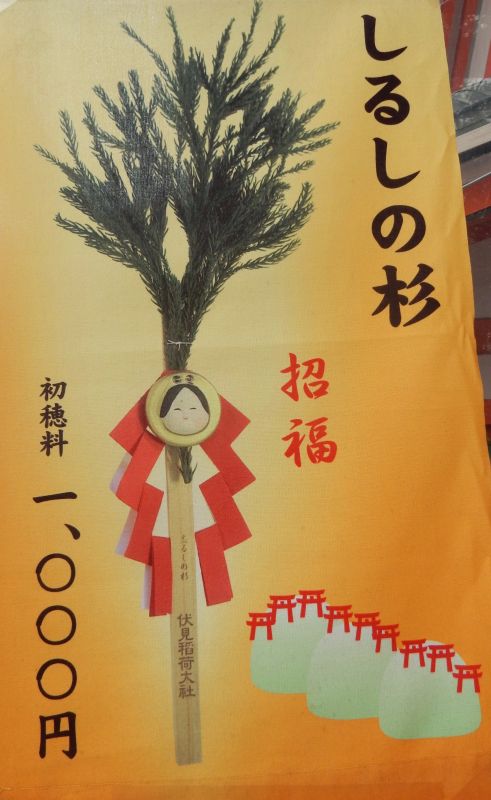
Poster advertising the shirushi no sugi for Y1000 ($9) with Otafuku face.
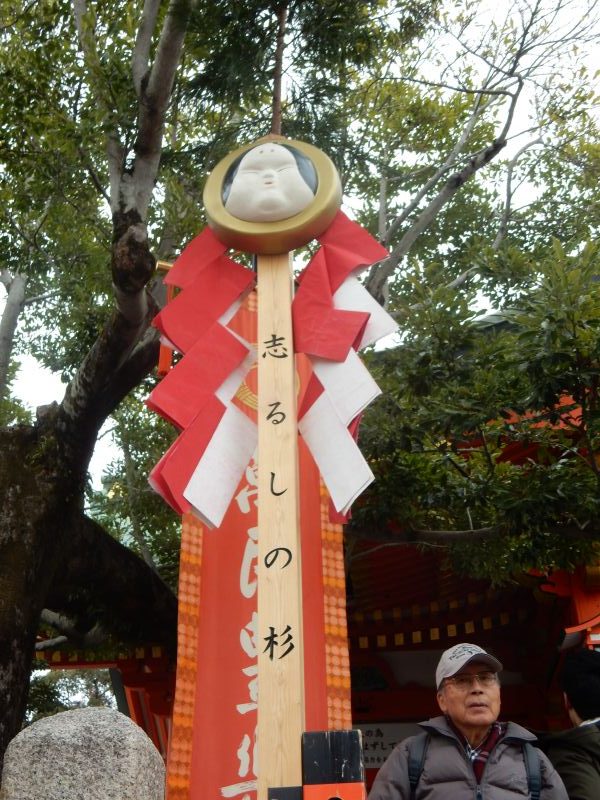
Otafuku fertility on display with red and white paper strips (shide) signifying celebration and happiness.
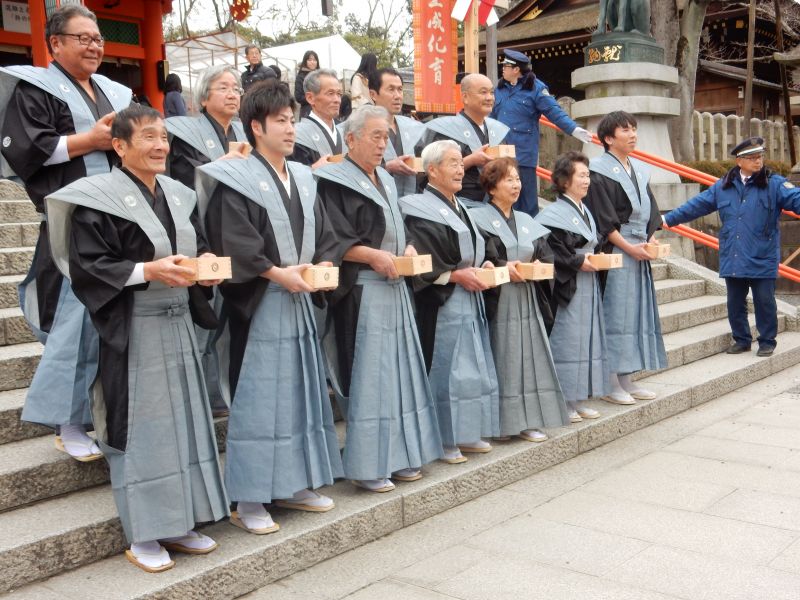
Ujiko (parish) members pose for a photo following their bean throwing. Looks like they enjoyed it!
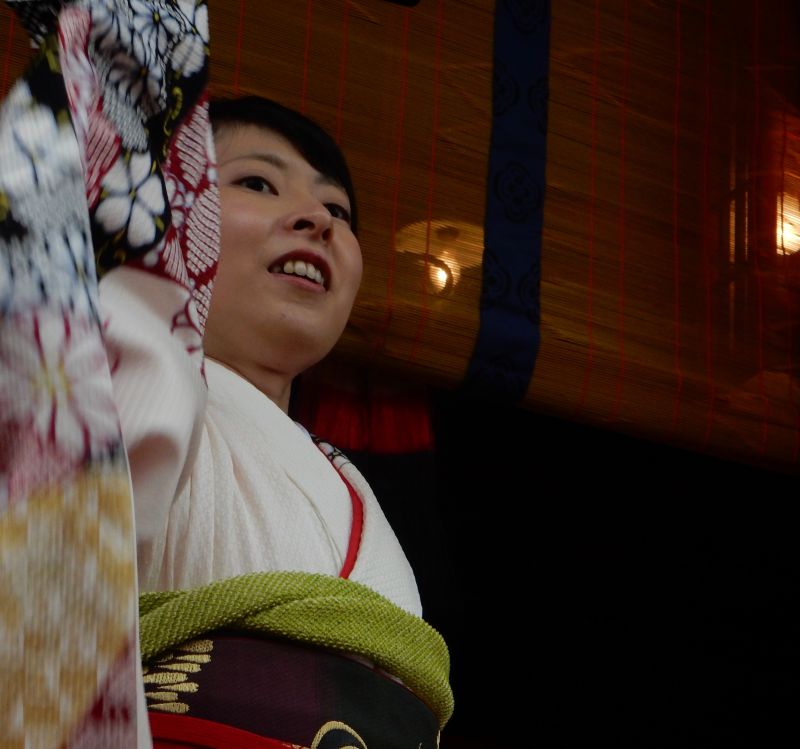
Some were better at throwing long distance than others…
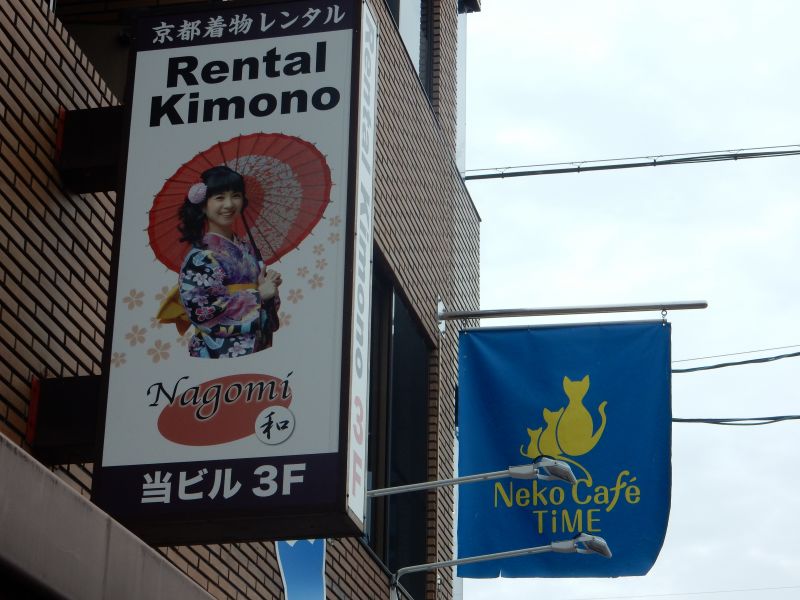
New businesses are seizing the opportunity that Fushimi Inari’s spectacular rise in popularity has brought…
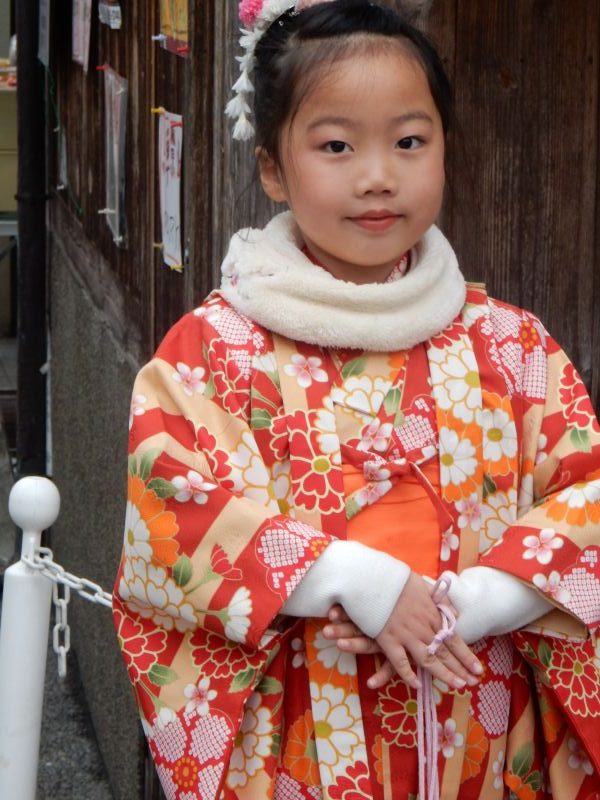
Some look just the part as a result.

Leave a Reply